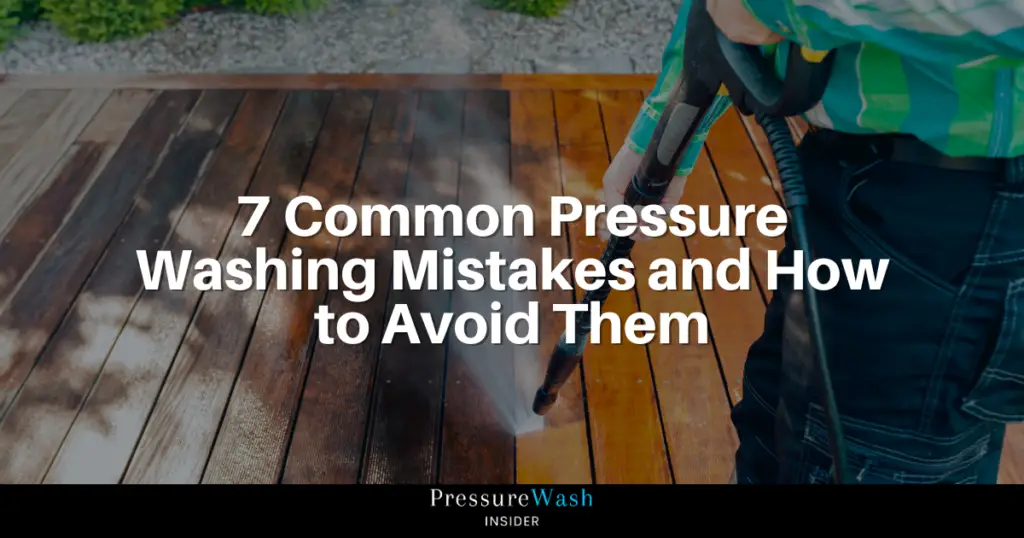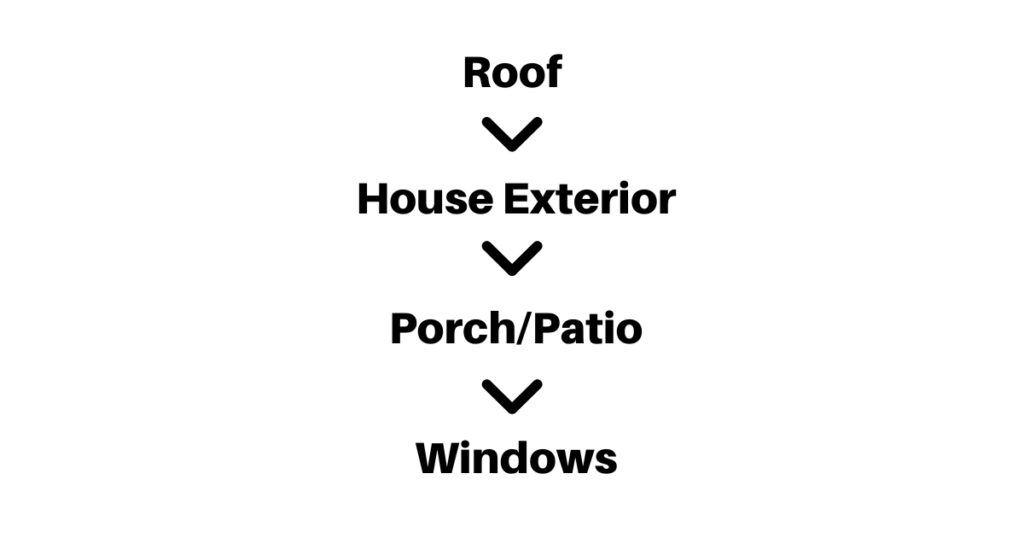Are your pressure washing endeavors falling short of expectations? In this comprehensive guide, we’ll uncover the most common pressure washing mistakes that can sabotage your cleaning efforts.
From using the wrong nozzle to neglecting the right cleaning sequence, these mistakes can leave your surfaces lackluster and your frustration levels soaring.

We’ll equip you with expert tips and practical advice to help you avoid these pitfalls and achieve impeccable results.
So, if you’re ready to level up your pressure washing game and bid farewell to those mistakes, let’s dive into the cleaning techniques.
Table of Contents
Common Pressure Washing Mistakes and How to Avoid Them
Using the Wrong Nozzle
One of the most common mistakes people make is using the wrong nozzle for the job. Different nozzles have different spray patterns and pressures, and using the wrong nozzle can result in ineffective cleaning or, even worse, damage to your surfaces. Here is a guide to Pressure Washer Nozzles
To avoid this mistake: Familiarize yourself with the different nozzle types and their recommended uses. Always check the manufacturer’s guidelines and experiment with different nozzles to find the one that works best for your specific cleaning needs.
Pressure Overload
Applying excessive pressure while pressure washing can cause serious damage to delicate surfaces such as wood, vinyl, or painted surfaces. It’s important to find the right balance between removing dirt and preserving the integrity of the surface. Applying too much force can leave you with damaged materials and a hefty repair bill.
To avoid this mistake: Begin with a low-pressure setting and increase gradually if necessary. Regularly assess the surface you are cleaning to ensure you’re not applying too much pressure. Remember, a gentle touch combined with patience often yields better results than going full throttle. Your surfaces will thank you for the care!
Using a Gas-Powered Pressure Washer Indoors
Gas-powered pressure washers emit carbon monoxide, a highly toxic gas. Using them in enclosed or poorly ventilated areas can lead to serious health risks. It’s like inviting danger for a cup of tea! Always operate gas-powered pressure washers outdoors or in well-ventilated spaces to prevent harmful exposure.
To avoid this mistake: Never use a gas-powered pressure washer indoors. Ensure you have ample ventilation if you’re using one in a partially enclosed area, and always prioritize safety by following the manufacturer’s instructions.
Using Only Water
Water alone can work wonders, but it has its limits when it comes to tackling stubborn stains or deeply ingrained grime. Utilizing a pressure washer detergent or cleaner specially formulated for pressure washing can significantly enhance the cleaning process and deliver more satisfactory results.
To avoid this mistake: Invest in a suitable pressure washer detergent or cleaner and use it according to the instructions provided. This will help you achieve a thorough and effective cleaning, especially when dealing with tougher stains or dirt.
Washing in the Wrong Sequence
The order in which you clean different surfaces can make a significant difference in efficiency and effectiveness. Starting from the top and working your way down is a commonly recommended method. This way, you prevent dirty water from splashing onto previously cleaned surfaces, ensuring a more uniform and satisfying outcome.

To avoid this mistake: Establish a proper cleaning sequence that starts from the top and works its way down. This will prevent recontamination and allow you to achieve cleaner results with less effort.
Using Hot Water
Using hot water in a pressure washer might seem like a good idea to remove grease or oil stains, but it can actually cause damage to certain surfaces. Hot water can soften or warp materials such as vinyl or paint, leading to costly repairs or replacements.
To avoid this mistake: Unless explicitly recommended by the manufacturer, avoid using hot water in your pressure washer. Stick to cold water, as it is generally safe for most surfaces and still effective in removing dirt and grime.
Cleaning Windows Incorrectly
Pressure washing windows requires extra care and attention. High-pressure water can easily crack or break the glass, damage window frames, or force water into the interior of your home. It’s best to use a lower-pressure setting or consider using a window cleaning solution and a squeegee instead.
To avoid this mistake: Be cautious when pressure washing windows. Opt for a lower-pressure setting, use a window cleaning solution, and gently clean the glass using a soft brush or sponge. Finish off with a squeegee for streak-free results. This way, you’ll get those crystal-clear windows without any unwanted surprises.
Conclusion
By being mindful of these common pressure washing mistakes and following the recommended tips, you can ensure a successful and safe cleaning experience.
Remember, choose the right nozzle, find that perfect pressure balance, avoid using gas-powered washers indoors, embrace the power of detergents, follow the correct cleaning sequence, be mindful of hot water, and treat your windows with a gentle touch.

